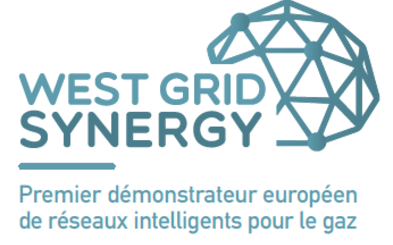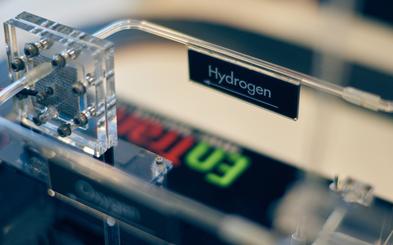INNOVATIVE PROJECTS PLATFORM
To efficiently build on its Members' actions to promote or contribute to innovative technologies, regulation and business models, and partnerships across the value chain, ENTSOG has created the Innovative Projects Platform to map TSOs’ projects and partnerships on Research, Development and Innovation (RDI) activities for the energy transition.
This public platform provides information and links to enable exchange of best practices applied at national level and in some cases, across borders through partnership efforts.
These innovative solutions focus on topics such as repurposing infrastructure for renewable gases and projects for hydrogen, CCS and CO2 transport, biogas, energy system integration. These innovative applications support the achievement of the current EU goals of reducing GHG emissions and reaching the decarbonisation goal of net-zero by 2050.
*Disclaimer: The content published on this page is information owned by TSOs and not by ENTSOG. It is therefore published on behalf of TSOs. Please note terms and conditions of use of the website (including article 7) are fully applicable to this page.
Technology
Discover here how technologies can optimise the usage of the grid, make digital layer connections and support decarbonisation of the EU gas system. Technology R&D has a vital role in the energy transition. ENTSOG Members (TSOs) are developing new and innovative technologies to offer sustainable solutions for the gas sector.
Regulation & Business Model
Stay informed on how ENTSOG Members (TSOs) engage in development of the new energy products and services to foster uptake of renewable and decarbonised gases into the grid.
Partnership
Look at new partnerships and initiatives formed by ENTSOG’s Members (TSOs). They are actively working together as well as with various stakeholders on projects aimed at decarbonisation of the gas sector and of the whole EU economy.
Hydrogen
Hydrogen is a gas under standard conditions and there are also different hydrogen derivatives, such as ammonia and synthetic electrofuel. sHydrogen can be produced from diverse process technologies, such as electrolysis and steam-methane reforming (with or without carbon capture and permanent storage of this carbon to reduce emissions).
Repurposing for Renewable Gases
Repurposing of pipelines for renewable gases transport (e.g. hydrogen) is a cost effective way to meet decarbonisation goals and can be undertaken without compromising the ability of the natural gas network to ensure security of supply.
Biogas
Biogas is obtained via the anaerobic decomposition of the organic matter. After the process of upgrading, biogas becomes biomethane with the same quality standard as natural gas and can be transported via the existing grid infrastructure.
CCS and CO2 Transport
Carbon Capture and storage is the process of capturing CO2 from a set of possible sources, such as for example fossil fuel power plants, transporting it to a storage site, and depositing it underground on a permanent basis. The aim is to prevent the release of CO2 into the atmosphere.
Energy System Integration
Integrated infrastructure planning for electricity and gases is essential to support the decarbonisation of the energy system sector, particularly for facilitating the transport of renewable gases like hydrogen.
CNG
Compressed Natural Gas (CNG) is a fuel source that is made from compressing natural gas to less than 1% of its standard atmospheric volume. CNG combustion produces fewer climate-impacting gases than other fossil fuels.
Digitalisation
Digitalisation can bring various benefits to day-to-day operations such as enhanced control over the gas quality and cost reductions. TSOs look at data-driven solutions to boost performance, efficiency and competitiveness.
Heating & Cooling
Cutting the energy consumption in heating and cooling in buildings and industry can be achieved through various technologies. TSOs are working on developing cost-efficient solutions for the decarbonisation of this sector.
Certification of green gases
To ensure the cross-border scale up and tradability of renewable, decarbonised and low-carbon gases. This can be achieved via pan European Guarantees of Origin and Certification Schemes.
Società Gasdotti Italia S.p.A.
HyBRIDS
Project envisages construction of a 2 km hydrogen pipeline and facilities connecting Green H2 production plant of Società Chimica Bussi (SCB) to SGI high-pressure gas network. This connection will provide:
- H2 / CH4 blending services for grid injection of excess H2 production initially up to 1% (in vol.);
- H2 modulation/ storage services allowing retrieval of H2 from pipeline, hence operating as storage infrastructure for other SCB uses.
Contact: Antonio.serlenga@sgispa.com
SNAM
Hybrid Cloud
SNAM and Microsoft launch the first joint project on Cloud and IoT for the technological and sustainable development of energy networks. The “Hybrid Cloud” infrastructure will allow to leverage greater data processing capacity and IoT to manage network in an increasingly efficient and flexible way. The synergy will create a digital architecture capable of delivering some services from the Cloud, including commercial applications serving users of the gas system.
Contact: davide.ciullo@snam.it
GRTgaz
MosaHYc (Mosel Saar HYdrogen Conversion)
GRTgaz SA and Creos Deutschland GmbH are collaborating to create a 100% pure hydrogen infrastructure, connecting the Saar (Germany), Lorraine (France) and the Luxembourg border. This 70 km-long infrastructure will be capable of transporting up to 20,000 m³/h (60 MW) of pure hydrogen via retrofitted existing gas pipelines.
Contact: jeanmarc.brimont@grtgaz.com
GAZ-SYSTEM
Damasławek UGS
The project calls for the first hydrogen cavern to be operational around 2030. The location and geological conditions allow for the creation of a storage facility of key importance to the energy security of Poland and the construction of the entire hydrogen economy. The storage facility can ideally fit into hydrogen clusters that will be created around industrial centers as well as offshore and renewable energy storage facilities.
GRTgaz
Hydrothermal gasification
Hydrothermal gasification is a technology converting wet biomass and treating organic wastes and residues. It uses the water contained into the biomass as the reaction environment in its supercritical phase to produce a synthesis gas. In Europe, several stakeholders are developing or currently operating pilot plants of this technology. The technology could reach industrial scale by 2023-25 with modular installations scaled between 0,5 and 6 t/h.
Contact: jeanmarc.brimont@grtgaz.com, robert.muhlke@grtgaz.com
OGE
CO2 transportation grid
The transportation grid consists of the CO2 starter grid and expansion routes. With a length of 964 km, the planned CO2 starter grid is set to transport 18.8 million tons of CO2 in future. Locations are connected where CO2 is captured, such as the cement and lime industries, with places where CO2 is used, like the chemical industry – all with the goal of a circular economy. Locations are linked up where CO2 is captured with relevant port facilities like Wilhelmshaven.
Enagas
NewGasMet (Flow metering of renewable gases)
The overall objective of the project is to increase knowledge about the accuracy and durability of commercially available gas meters after exposure to renewable gases (biogas, biomethane, hydrogen, syngas and mixtures with natural gas). This should lead to the improvement of existing meter designs and flow calibration standards. The project started in June of 2019 and will last for 3 years, and is funded by the European Metrology Programme for Innovation and Research (EMPIR).
Contact: jmodrego@enagas.es
Gasunie
H-vision
H-vision is working to set up plants that will soon be supplying industry with low-carbon hydrogen. This unique partnership extends through the entire chain, and includes three refineries, electric power companies and a number of knowledge partners that collaborate to accelerate the development of the new network. The first plant, with a capacity of approximately 750 MW, will be completed by late 2026. A second hydrogen plant can increase the total capacity to over 1,500 MW. In partnership with, Deltalinqs, Air Liquide, BP, the Port of Rotterdam Authority, ONYX-Power Rotterdam, EBN, Equinor, Shell, Uniper, Royal Vopak and ExxonMobil.
GRTGaz
West Grid Synergy
In western France West Grid Synergy aims to design and experiment smart grid solutions to maximise biomethane injection into the transmission and distribution systems. This project essentially inaugurated the first reverse flow of locally produced biomethane from distribution to transmission in France.
Contact: jeanmarc.brimont@grtgaz.com

Ontras
Hydrogen Region Lausitz
Hydrogen from a large-scale electrolysis shall be injected into the gas transmission network of ONTRAS. The energy will be commercially offered to reduce the CO2 footprint of private households. At later stages the hydrogen ratio in the gas supply of a community will be increased with the target of eventually switch to a 100% hydrogen.
Contact: ralf.borschinsky@ontras.com









